While not immediately obvious, the Trek Domane boasts a list of technology as long as an Audax: IsoSpeed, IsoCore and IsoZone to name just three. But that’s where we question how much do we actually need? Is the amount of technology automatically reflected in performance? We’ve taken the Trek Domane SLR as our case study.
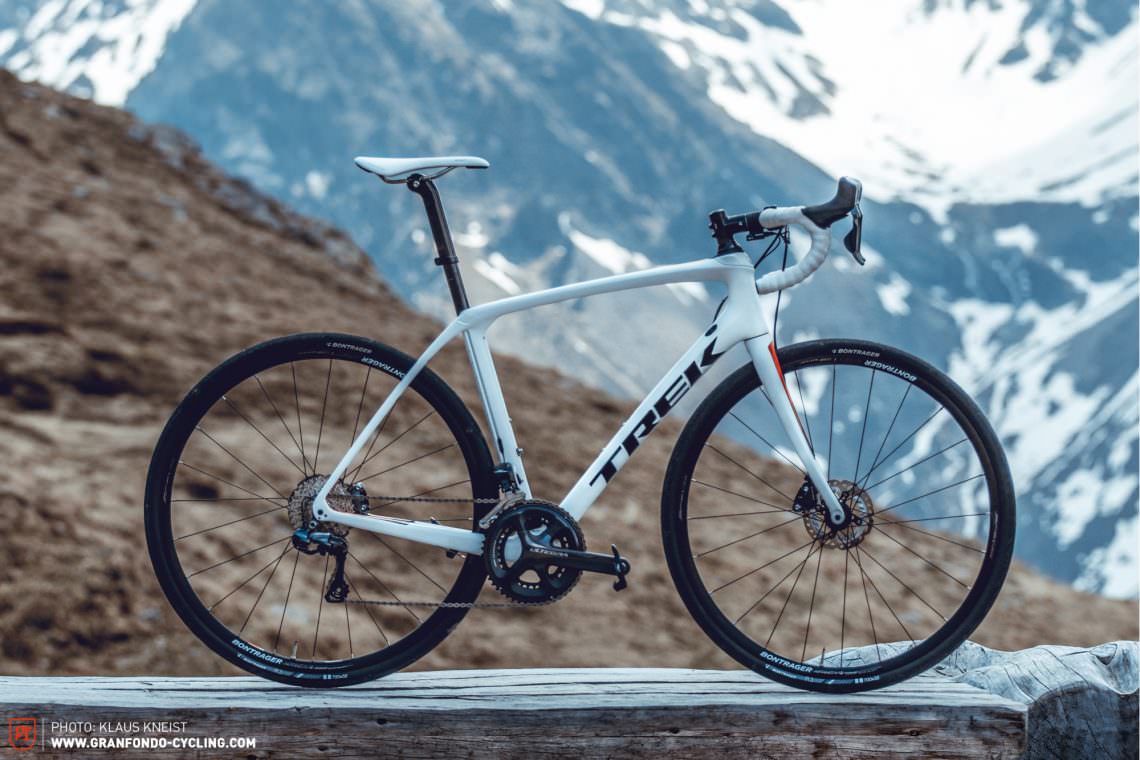
Four years ago, Trek first launched the Domane, bringing out a new range of bikes sold as more comfortable but no less quick. The Domane came with a innovative decoupling feature that increased vertical compliance by isolating the movement of the seat tube from the rest of the frame, called IsoSpeed.
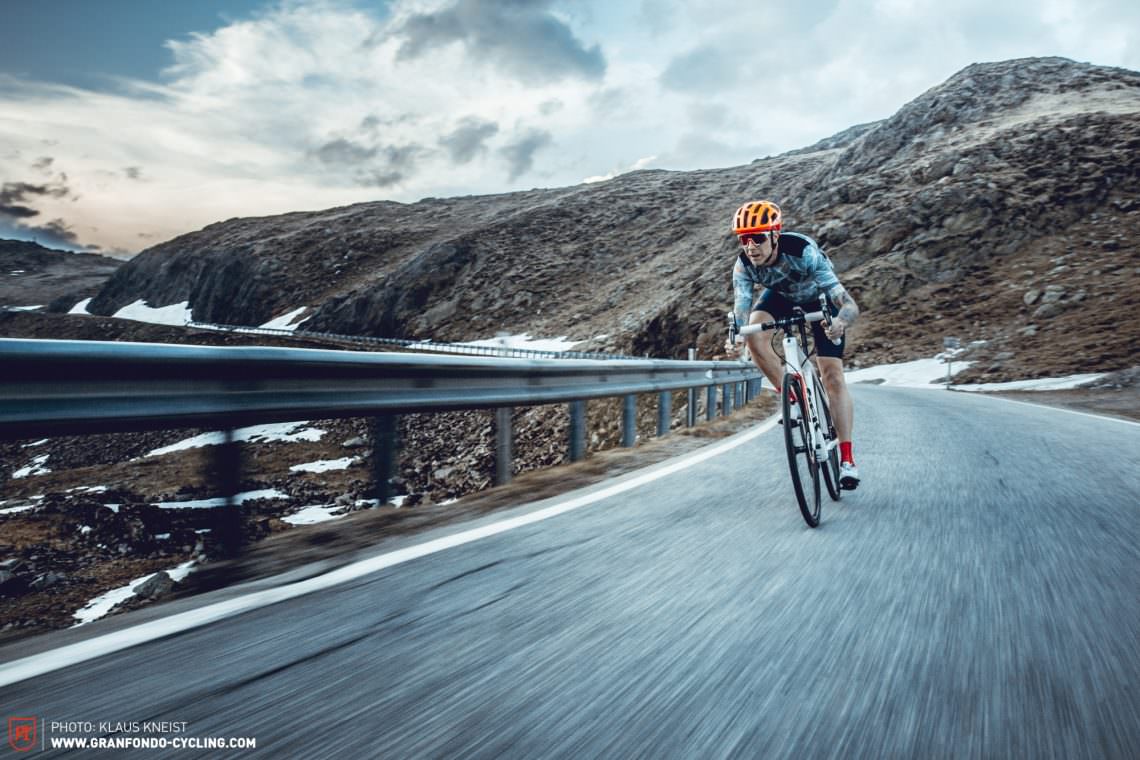 [emaillocker id=”2868″]
[emaillocker id=”2868″]
Come spring 2016, and Trek presented the latest evolution in the system with the new Domane SLR. The road-proven system now featured a slider, which allows the riders to adjust the seat post’s comfort level by around 30 %. In the ‘softest’ setting, Trek promise around 14 % more compliance compared to the previous Domane models. During our testing, the IsoSpeed joint at the rear of the bike was brilliant, and the bike was unfazed by cobbles and rough Italian roads that had lost favour with Italian bureaucrats. This was also thanks to the good 32 mm Bontrager tires, which eliminated any nastiness from the roads.
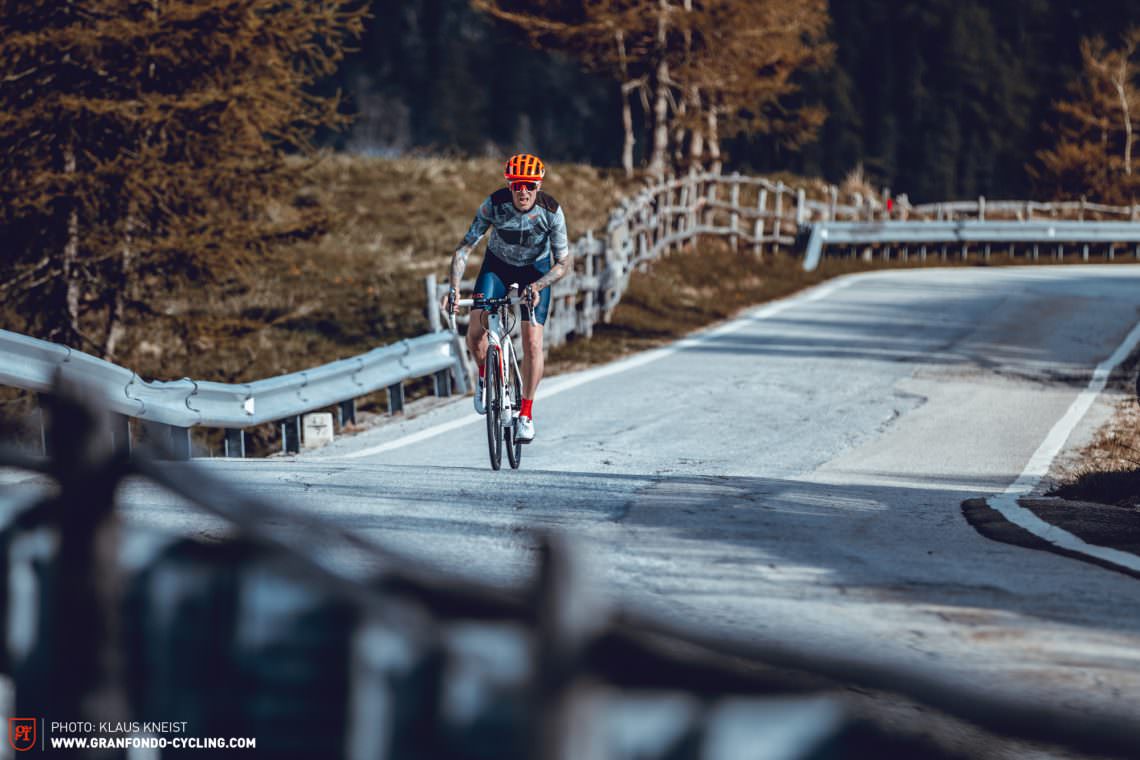
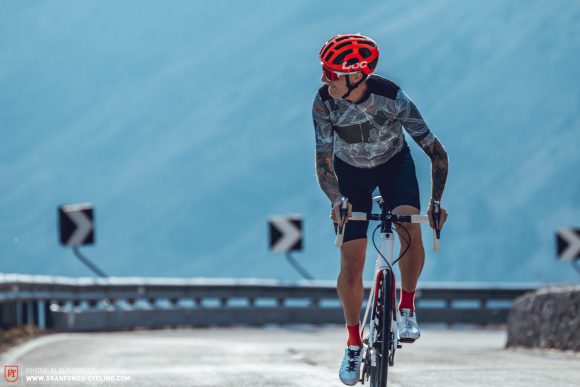
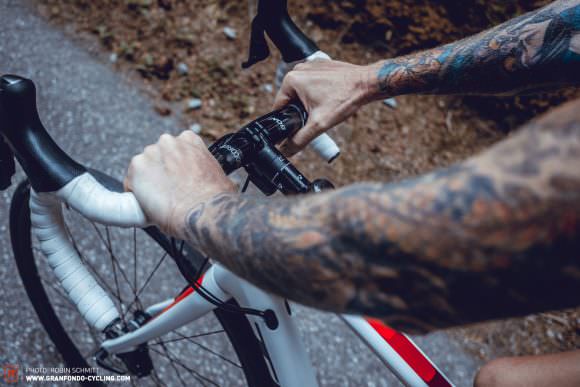
The newest Domane sees Trek bring their IsoSpeed concept to the front of the bike too, partially decoupling the top of the headtube with the fork’s steerer to both balance the ride and add more compliance. But does it come at the cost of precision? Not if you ask our test riders, who vehemently sang its praises. The simplicity of the adjustment slider for the rear’s IsoSpeed concept also won their favour, creating a significant impact on the seat mast’s flex.
In direct comparison to Cervélo and Canyon that offer a similar – if not better – level of comfort, the IsoSpeed split the group, leaving some wondering whether so much costly technology is actually necessary. After all, every added feature raises the bike’s total weight. So do we need it? If it’s just about comfort, the clear answer is “no”. However, the ability to directly adjust the IsoSpeed (even mid-ride) to suit the rider’s own preferences is definitely valued, and the technology enthusiasts amongst the test team were in awe of its understated complexity.
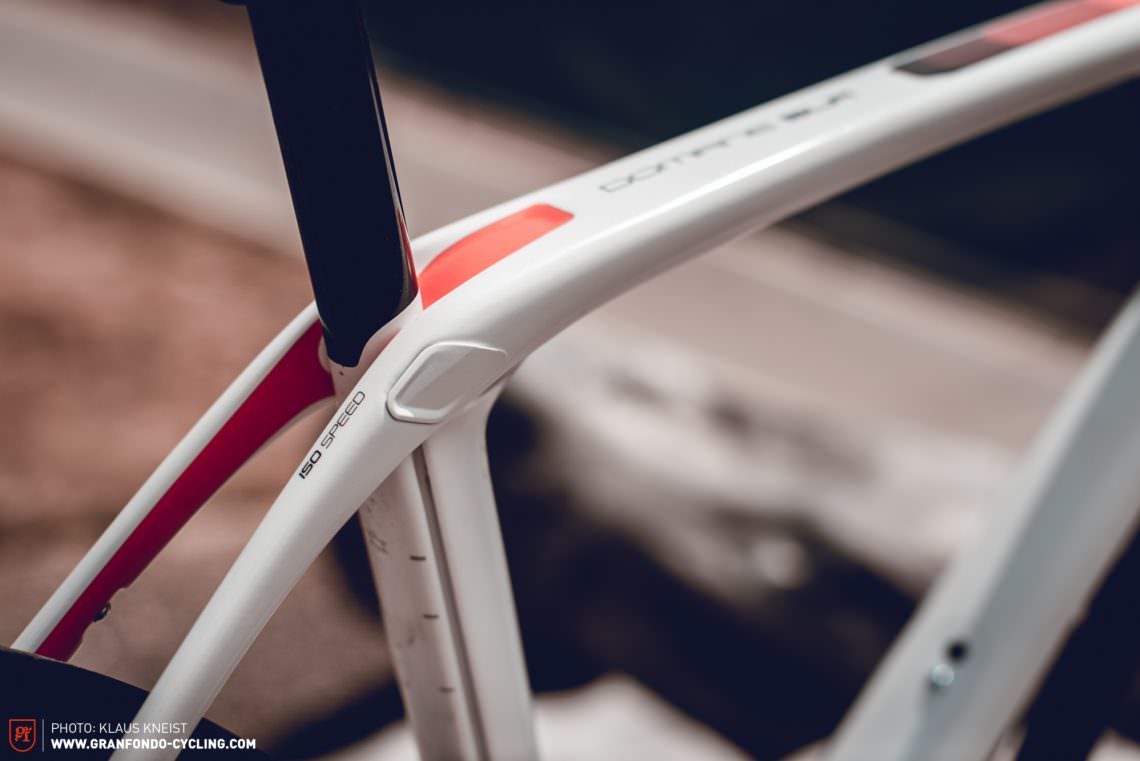
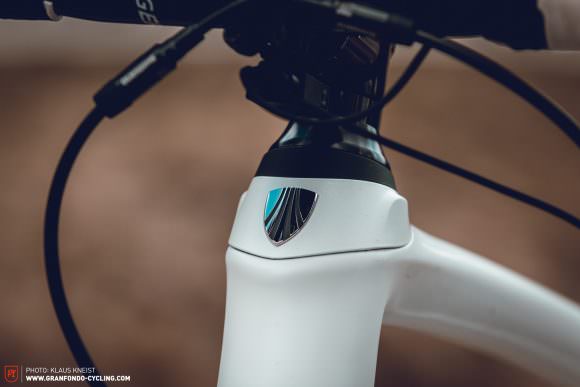

Specification of the Trek Domane SLR 7
Drivetrain: Shimano Ultegra Di2 | 50/34, 11 – 32
Wheels: Bontrager Affinity Comp Tubeless Ready Disc
Brakes: Shimano BR-RS805
Tires: Bontrager R3
Weight: 8.40 kg
Price: € 5,999
More info: trekbikes.com
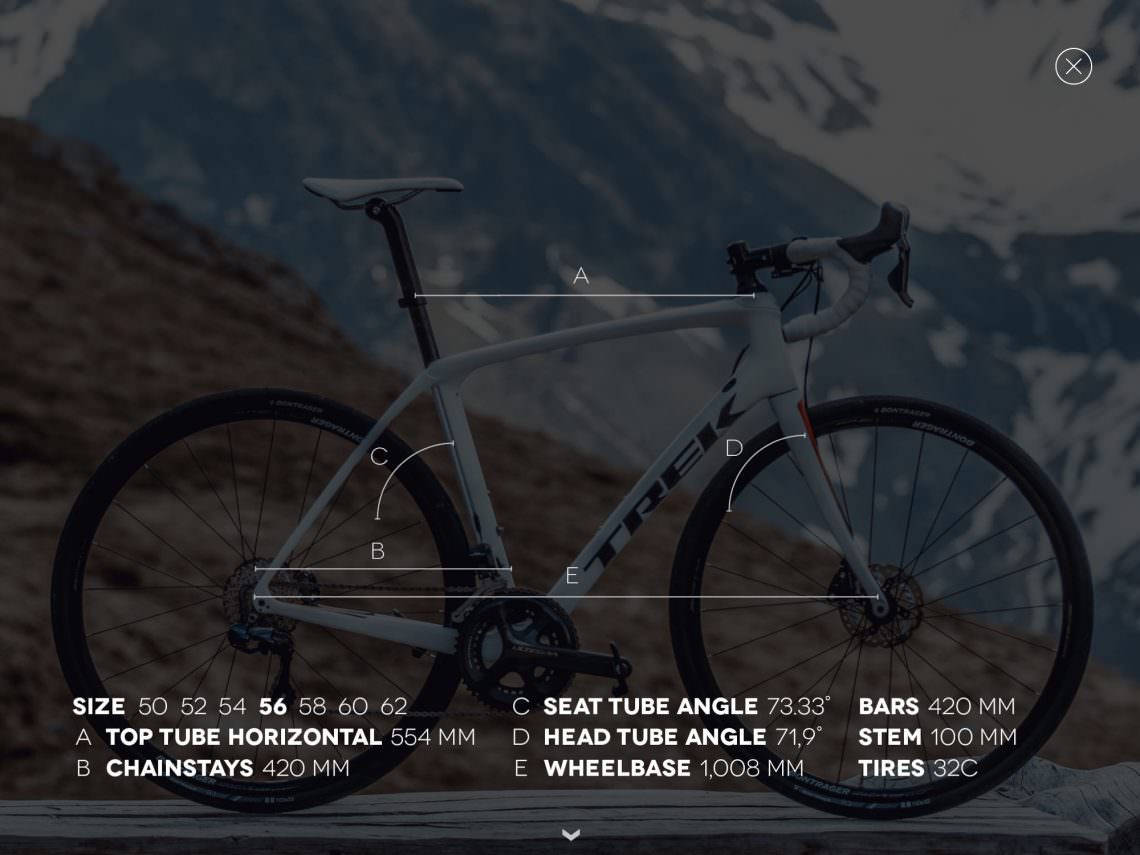
Trek ask for almost 6,000 € for the disc brake-equipped Domane, which features a veritable cocktail of technologies. Alongside the IsoSpeed, there’s also Trek’s OCLV carbon technology, Bontrager’s new comfort bars (“IsoCore”), and the Ultegra Di2 groupset from Shimano. The bars feature a layer of thermoplastic elastomer under the carbon-fibre composite, designed to reduce high-frequency vibrations. Given the thick bar tape, additional gel inserts, the steerer’s IsoSpeed and the chunky tires, you could almost argue that the front appears over-engineered. We’d have liked to have seen 160 mm disc rotors as standard on the Domane SLR.
Conclusion:
If you’re willing to dish out big bucks for a distinctive design and finance new feats of technology, then the Trek Domane SLR 7 is a real gem. In return for your euros, you’ll not only get an eye-catching bike but also one that’s capable of conquering virtually every terrain. With its well-designed riding position, it’s a case of the further you ride, the more you’ll benefit. If you prefer a more aggressive ride then opt for the Race Shop Limited edition model with its Pro Endurance geometry.
Strenghts
- Versatile and intelligent bike that’s capable of (virtually) everything
- Great details and fascinating technology
Weaknesses
- Expensive technology considering its comfort-beneftis
- Boring standard Di2 integration on the bars
To get an overview about the bikes we tested, check this article: What’s the best road bike to conquer the Alps? 7 bikes on test
All bikes in test: Specialized Roubaix SL4 Pro Disc Race UDi2 | Merida Scultura Disc 6000 | Giant Defy Advanced Pro 0 | Cervélo C3 SRAM Force 1X | Canyon Endurace CF SLX | Argon 18 Krypton XROAD Disc
This article belongs to the GRAN FONDO Issue #002. For the full interactive experience we recommend reading it in our magazine app for iPhone & iPad – it’s awesome – and free!
Did you enjoy this article? If so, we would be stoked if you decide to support us with a monthly contribution. By becoming a supporter of GRAN FONDO, you will help secure a sustainable future for high-quality cycling journalism. Click here to learn more.
Words: Thomas Seidelmann, Robin Schmitt Photos: Klaus Kneist, Noah Haxel, Robin Schmitt, Julian Mittelstädt (Post production)










